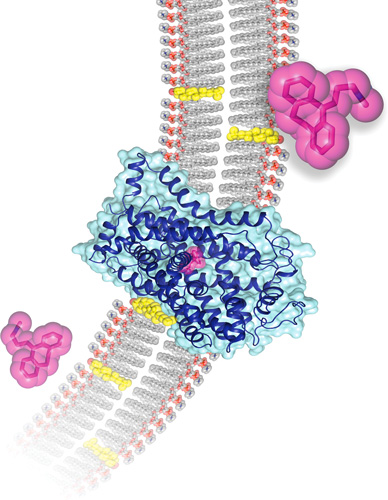 BY LINDA BAKER
BY LINDA BAKER
Although millions of people take anti-depressants, scientists know astonishingly little about how these therapies actually work.
 BY LINDA BAKER
BY LINDA BAKER
Although millions of people take anti-depressants, scientists know astonishingly little about how these therapies actually work. “It was kind of hit or miss; the measure was whether the person got better or not,” says Eric Gouaux, a senior scientist at OHSU’s Vollum Institute. Now Gouaux and his lab are shedding new light on a previously cloudy process: Their research focuses on the dopamine transporter, a protein that helps regulate levels of dopamine, a neurotransmitter. Abnormal levels of dopamine are present in a variety of disorders, including depression. So what is Gouaux’s scientific breakthrough? “For the first time, we are able to visualize the molecular details of what the antidepressant does when it binds to a biologically active site,” he says. In layman’s terms: “We can finally see the lock in which keys have been placed.” The key to success was solving the 3-D crystal structure of the dopamine transporter, a notoriously difficult task that has stymied scientists for decades. The next step is to gain insight into better therapies, as well as to visualize the impact of drugs such as methamphetamine and cocaine, which exert much of their biological effect by inhibiting the dopamine transporter. In the meantime, Gouaux, who has labored four years on the project, is pretty happy with his lab’s pioneering discovery. “It’s been a pilgrimage,” he says.


